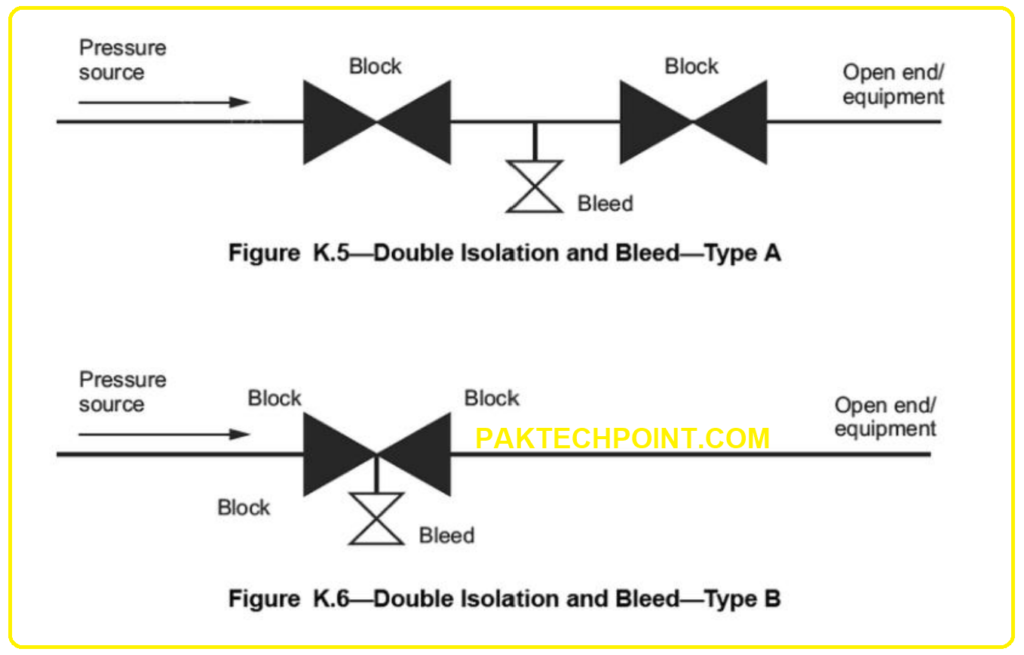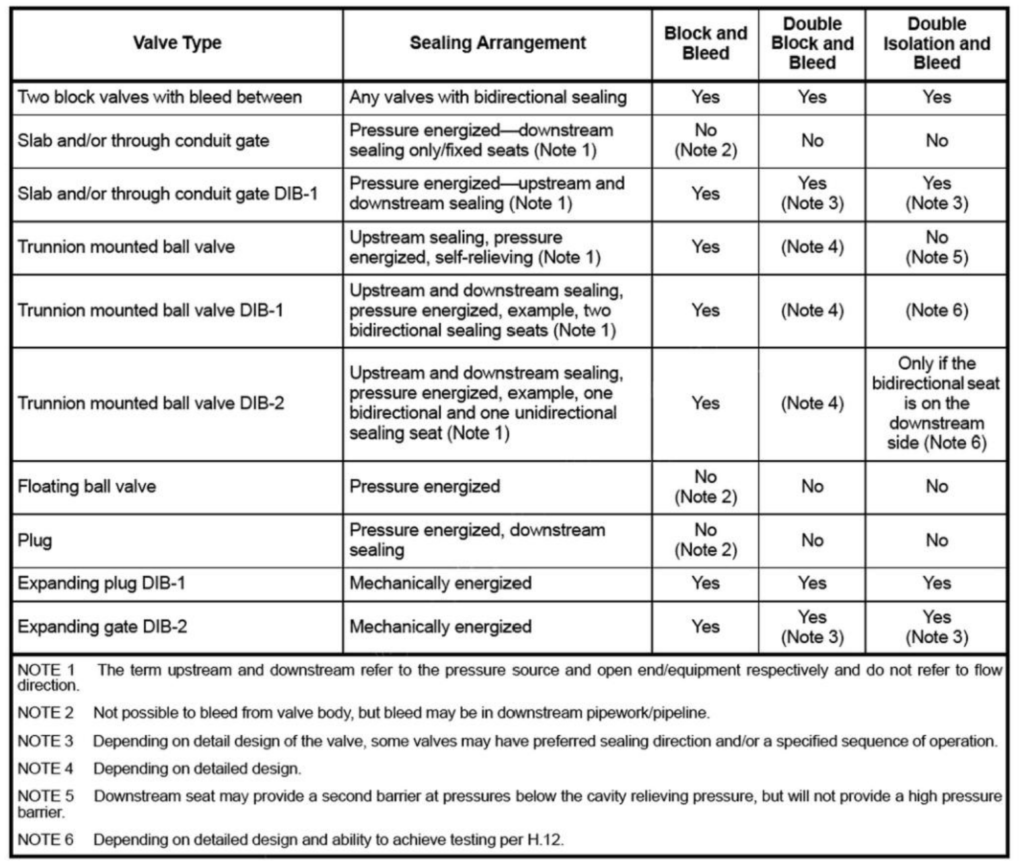The DIB (Double Isolation and Bleed) feature of a valve or valves refers to their capability to offer two separate sealing elements to a single pressure source while allowing for bleeding or venting between these two sealing elements. It’s important to note that in certain documents related to equipment isolation, this feature may also be referred to as “double block and bleed.” This article is as per international standard of API Spec 6D.
Double Isolation and Bleed (DIB)
Double Isolation and Bleed (DIB) is an advanced valve arrangement used in critical applications to ensure a high level of safety and isolation in fluid systems. It combines the features of double block and bleed valves with an additional bleed valve to achieve a superior level of isolation and control. Here are the key components and functions of a Double Isolation and Bleed system:
- Two Block Valves: A DIB system typically consists of two block valves, which are robust valves designed to completely isolate the process fluid. These block valves are usually located on either side of the pipeline or process equipment.
- Bleed (Vent) Valve: In addition to the two block valves, a bleed (vent) valve is included in the arrangement. The bleed valve serves as a secondary means of isolation and allows for controlled venting or bleeding of the cavity between the two block valves.
- Isolation and Safety: The primary purpose of a DIB system is to provide double isolation, which means that both block valves are fully closed to isolate the process fluid. This dual isolation enhances safety by reducing the risk of leakage or unintended fluid release.
- Bleeding Capability: The bleed valve, also known as a vent or drain valve, is used for various purposes:

- Pressure Relief: It allows for the controlled release of pressure between the two block valves, preventing overpressure in the cavity.
- Leak Detection: By monitoring any leakage or fluid presence in the cavity, operators can detect potential issues with the primary block valves.
- Sampling: The bleed valve can be used for fluid sampling or introducing test fluids into the cavity for analysis.
- Purging: It enables the purging of gases or fluids from the cavity to maintain a safe working environment.
- Safety and Maintenance: DIB systems are commonly used in applications where safety and maintenance are paramount. They are often employed in critical processes within industries such as oil and gas, petrochemical, chemical, and power generation.
- Reduced Risk: The use of DIB systems reduces the risk of hazardous fluid release, environmental contamination, and potential harm to personnel. These systems are designed to meet strict safety and environmental standards.
- Valve Design: DIB valves are precision-engineered to meet rigorous industry standards, ensuring reliable performance under demanding conditions.
In summary, Double Isolation and Bleed (DIB) systems are an integral part of critical fluid systems, providing an extra layer of safety by combining double isolation with a bleed valve for controlled venting and monitoring. These systems are essential in industries where the consequences of fluid leakage or system failure can be severe, and safety and environmental protection are paramount.
Table following, which contains information about valve functions and features, serves as a reference guide and is not exhaustive or restrictive. It offers guidance on typical valve characteristics but does not cover all possible variations. It’s crucial for users to consult valve manufacturers to determine specific valve features that meet their operational requirements.
Here’s a breakdown of the key points in this article:
- Informative Guidance: Table following provides informative guidance about valve functions and features. It is not an exhaustive list and should be used as a reference rather than a definitive rule.
- Unique Sealing Characteristics: Individual valve designs may have unique sealing characteristics that are not covered by the table. This highlights the need to consider specific valve features based on the manufacturer’s recommendations.
- User Responsibility: Users are responsible for ensuring that the operational requirements align with the particular valve features they choose. This includes considering sealing capabilities and valve functions.
- Definition of Terms: The table and accompanying sketches aim to define terms such as “block and bleed,” “double block and bleed,” and “double isolation and bleed” in the context of valve arrangements. These definitions are based on the specifications in the document.
- Differing Definitions: The text acknowledges that other documents and regulations, including federal regulations, may have different definitions for these terms. It implies that users should be aware of variations in definitions and standards across different sources.
In summary, this passage underscores the need for users to exercise judgment and consult with valve manufacturers to select valve features that align with their specific operational requirements. It also acknowledges that terminology and definitions may vary across documents and regulations, so users should be aware of these differences.
